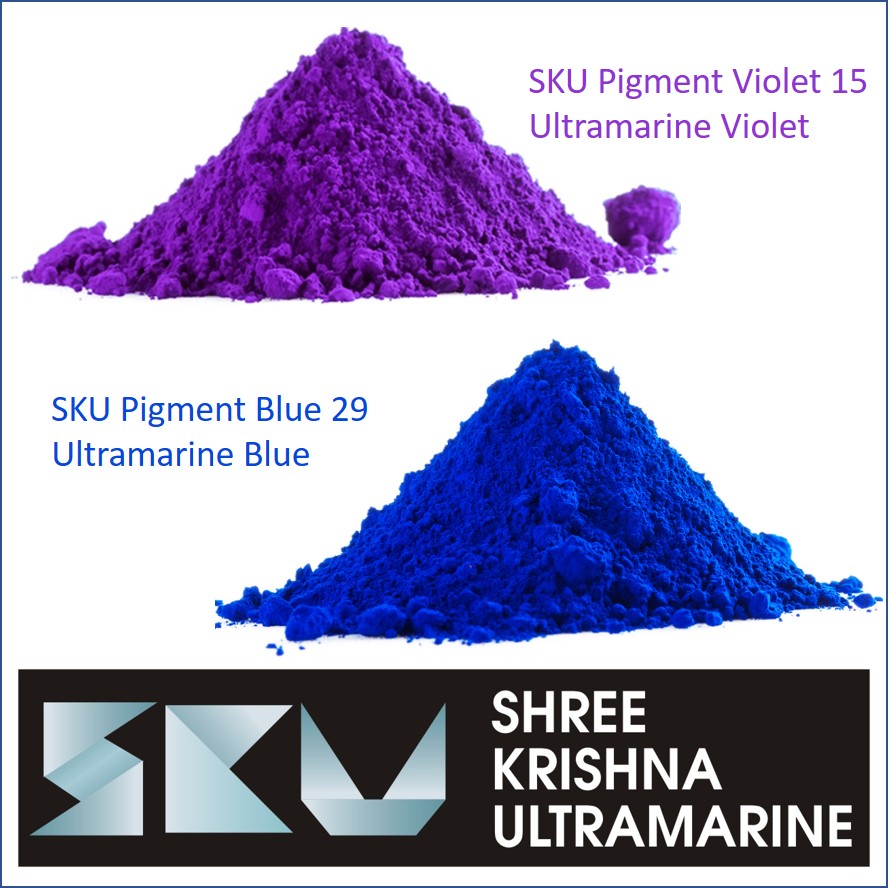Ultramarine Pigments: From Ancient Art to Modern Industry

For centuries, color has defined art, design, and industry. Among the most significant hues, Ultramarine stands out for its vivid tones. Today, companies like SKU Pigments produce high-quality Ultramarine pigments, including Ultramarine Blue, Ultramarine Violet, Pigment Blue 29, and Pigment Violet. From paints and plastics, Ultramarine has become the standard of modern blue pigments.
The Journey of Ultramarine Through Time
The name Ultramarine comes from the Latin “ultra mare,” meaning “beyond the sea,” a reference to lapis lazuli originally imported from Afghanistan. For centuries, it was a rare treasure, used by Renaissance masters to illuminate manuscripts. It symbolized purity and heaven.
Modern chemistry made it possible to produce artificially Ultramarine pigments, bringing the once-exclusive shade into mass production. This breakthrough turned a precious rarity into a cost-effective solution for countless sectors.
Ultramarine Blue Pigments
Ultramarine Blue pigments—the synthetic form of Pigment Blue 29—are the most widely used. Known for their stability, they are perfect for sensitive applications. They are used in:
• Paints and coatings for durability and brilliance.
• Automotive and packaging industries, thanks to UV resistance.
• Fine printing, where clarity is vital.
• Personal care, given their skin-safe quality.
This balance of performance and safety keeps Ultramarine Blue among the top pigments.
Exploring the Subtlety of Ultramarine Violet
Ultramarine Violet offers subtle elegance that appeal in cosmetics. Pigment Violet derived from Ultramarine is eco-safe, making it ideal for eco-friendly materials.
Its gentle color enhances fine art, while ensuring longevity without chemical breakdown.
Pigment Blue in Modern Industries
Pigment Blue—particularly Ultramarine Blue pigments—remains a trusted industrial choice. It offers tinting strength for:
• Vehicle coatings with resistance to fading.
• Branding, ensuring stable shades.
• Construction materials, adding beauty and durability.
This multi-industry demand ensures Pigment Blue’s staying Ultramarine Blue power.
Advantages of Ultramarine Pigments
• Non-Toxic & Safe: Ideal for cosmetics and toys.
• Heat & Light Resistant: Reliable even in high-heat industries.
• Eco-Friendly: Green production methods.
• Cost-Effective: Economical mass use.
• Versatile: Across paints, plastics, printing, and construction.
Where Ultramarine Pigments Shine
1. Paints & Coatings: Decorative finishes.
2. Plastics & Rubber: Resistant to heat.
3. Cosmetics: Skincare-safe pigments.
4. Construction: Tiles and cement.
5. Printing & Inks: Precision printing.
Why Choose SKU Pigments?
SKU Pigments leads the market, offering eco-conscious solutions in Ultramarine pigments. Their product portfolio includes:
• Pigment Blue 29 for mass production.
• Ultramarine Violet and Pigment Violet for elegance and subtlety.
• Custom shades for niche industries.
Their reputation is built on customer satisfaction and eco-friendly production.
Final Thoughts on Ultramarine Pigments
From lapis lazuli origins to a global industrial pigment, Ultramarine has evolved with industries. Whether it’s the timeless vibrancy of Ultramarine Blue, the sophistication of Ultramarine Violet, or the stability of Pigment Blue 29, Ultramarine pigments remain essential.
With SKU Pigments as a global supplier, industries achieve innovation with color. As demand for sustainable pigments rises, Ultramarine will lead in global markets.
FAQs
1. What is Ultramarine?
A blue/violet pigment with historic roots and modern industrial use.
2. What is Pigment Blue 29?
The standard code for Ultramarine in industries.
3. Where is Ultramarine Violet used?
In cosmetics and decorative paints.
4. Are Ultramarine pigments safe?
Yes, non-toxic and eco-friendly.
5. Why choose SKU Pigments?
Trusted supplier worldwide.